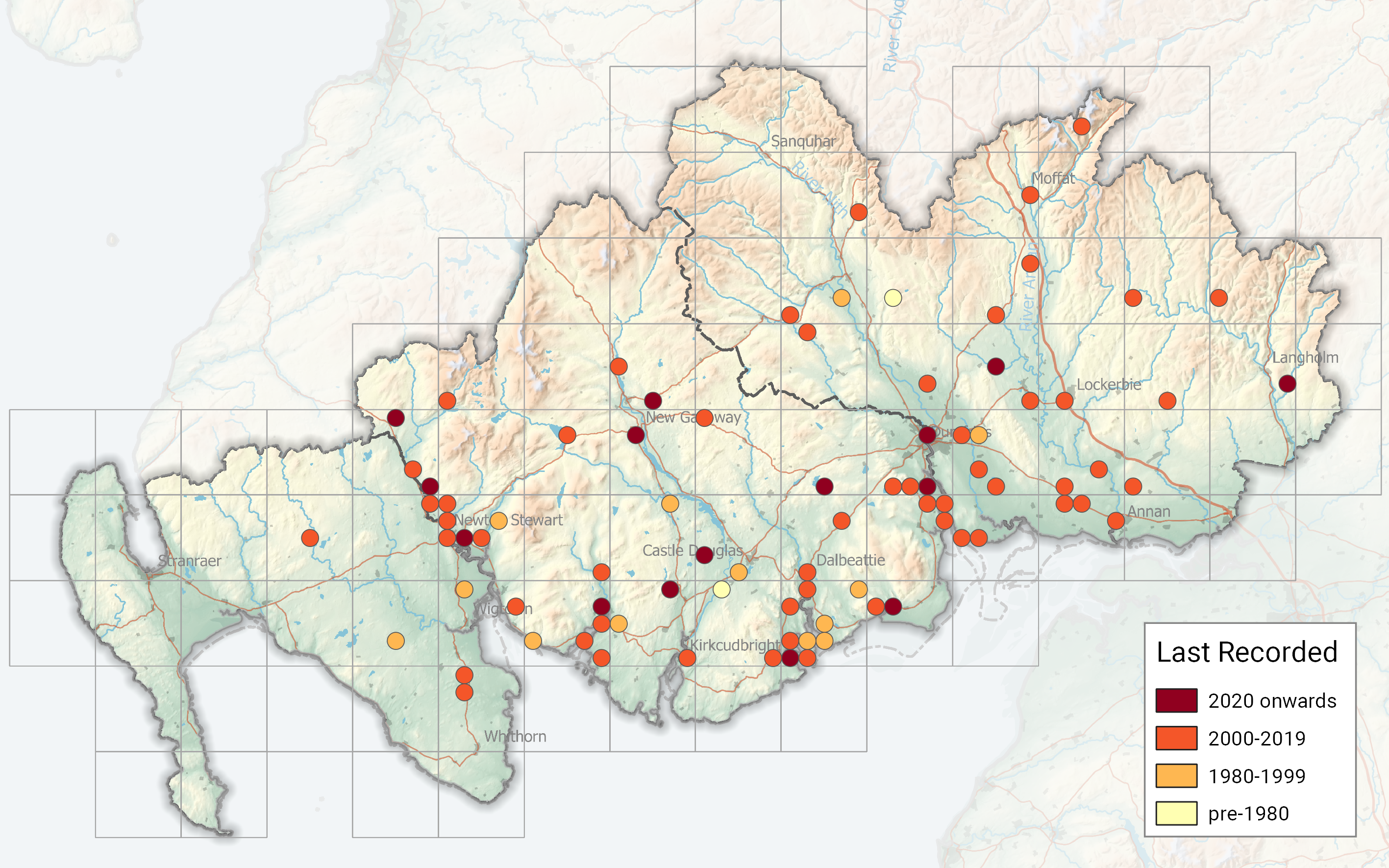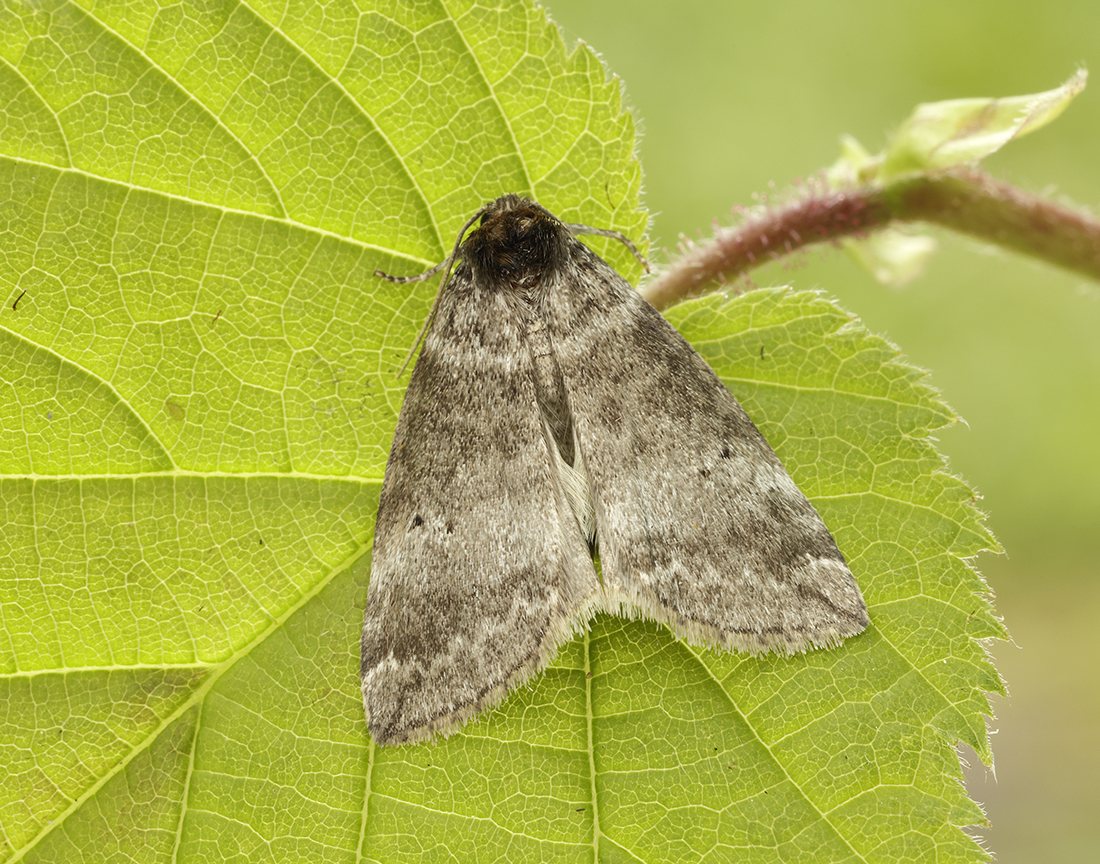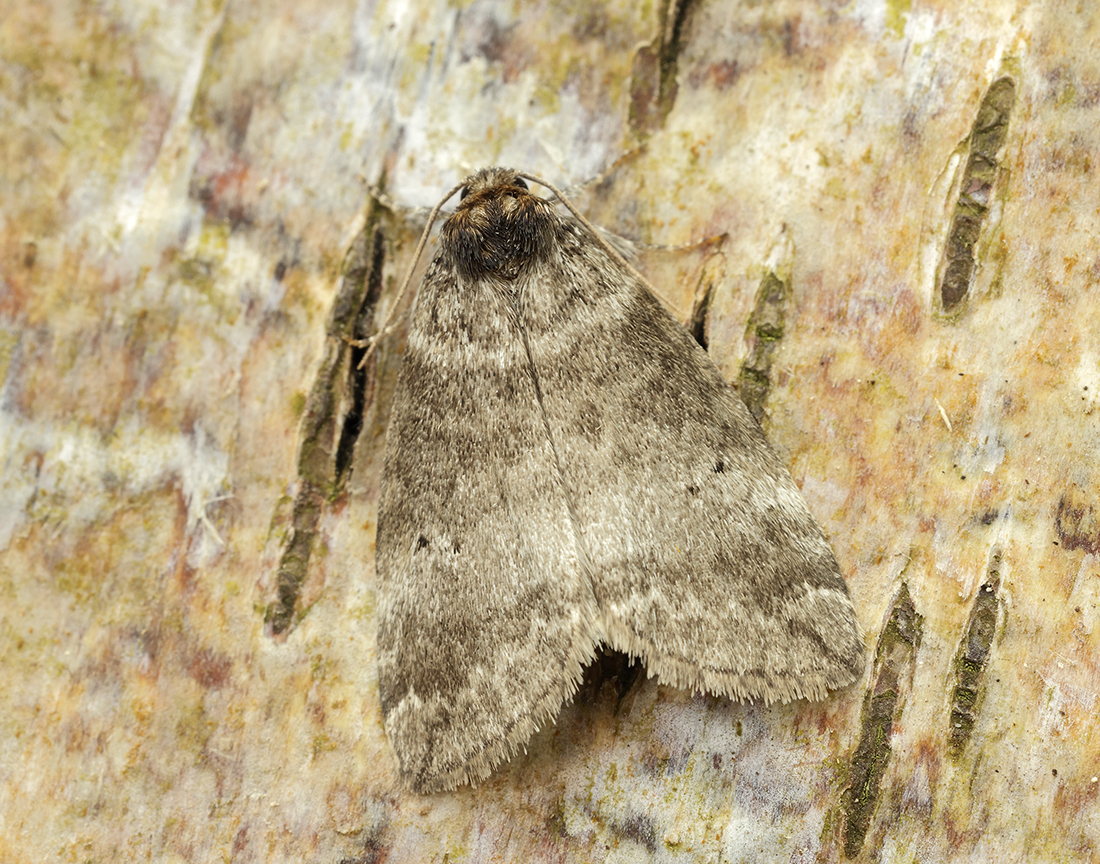Identification
Two dark dots on the forewing as well as a dash from the apex of the wing, will separate it from other Lutestrings.
Recording Method
Attracted to light.
Life cycle
One generation. Overwinters as a pupa, in a cocoon made between leaves of the foodplant, which naturally fall to the ground in the autumn. The larvae hide by day amongst the foodplant leaves but emerge to feed at night.
Larval foodplants
Birches. Also reported to feed on Alder, Hazel and oaks.
Habitat
Woodland, scrub, hedgerows and gardens where the birch foodplants are present.
History
This birch loving moth is our commonest recorded lutestring. The first record was in June 1870 found by W. Douglas Robinson in a copse wood on Almorness (VC73). Gordon (1913) stated it to be “Frequent at sugar in woods, and at dusk flying along woodsides,” and gave his earliest date as 5th June 1897.
Sir Arthur Duncan (1909-84) recorded it from Closeburn during his lifetime. With the advent of the Rothamsted Stations the recording of the Common Lutestring really took off with most of the records coming from Dumfriesshire and Kirkcudbrightshire. However, for Wigtownshire we have only a handful or records. Abundance is between one and five per trap.
A melanic form obscura Tutt occurred at Bargaly Lodge (VC73) in July 1992.












